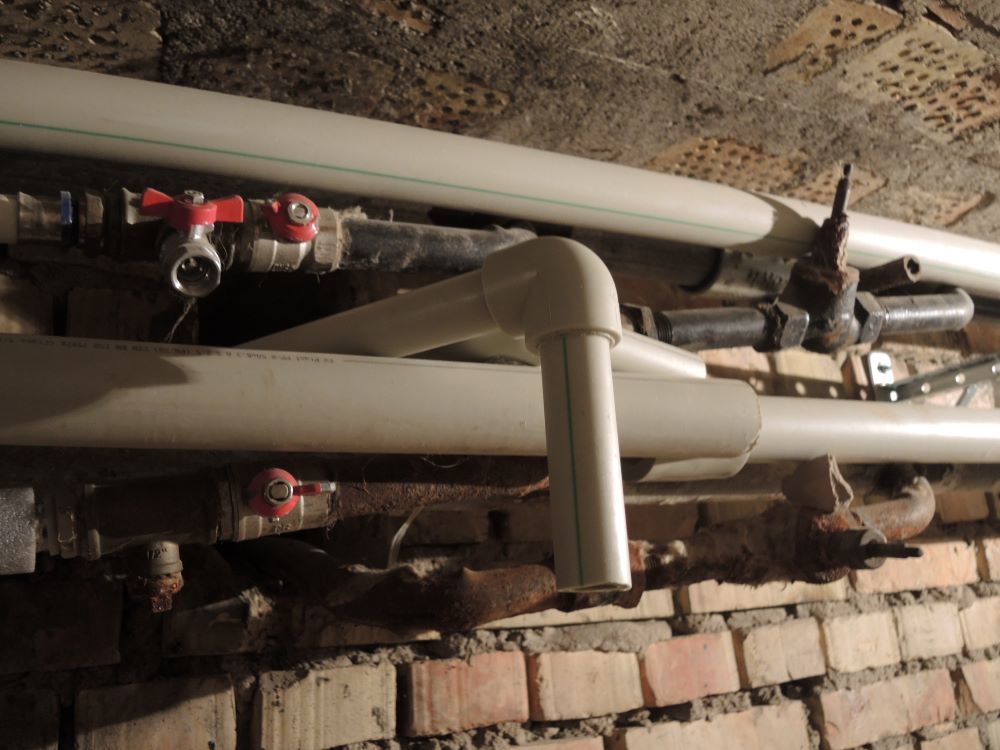If you are building a new house, boiler-room, renovating your home or thinking of installing a piped water system, you might need to consider the pipes you will use for sewerage and heating in the first place. And it is advised to do it carefully as your best investment are the pipes which are durable and of a high quality.
There is a high range of pipes you could go for including copper, plastic, metal, polymeric, chlorinated polyvinyl chloride or polythene pipes. So let's discuss the technical characteristics of different types of pipes, including its advantages and disadvantages.
Copper pipes and fittings can be used with total confidence in every part of domestic plumbing, including heating and water distribution systems. Copper pipes are incredibly durable, biostatic, easy to install, able to bend easily. Due to its ability to bend, it requires fewer connectors and fasteners, saving hardware and installation costs. Copper pipes also have excellent thermal conductivity and corrosion resistance.
When it comes to plastic pipes, it is important to mention that these are versatile, nearly leak free, easy to install and maintain. Plastic pipes have the durability of twenty-five years and more, sometimes even one hundred years and more. In comparison with other types of pipes, plastic ones are also cheaper. What is more, plastic pipes have a high resistance to corrosion. Plastic pipes are known for insulative qualities that prevent condensation from forming on pipes carrying cold water and the same qualities reduce heat loss through pipes carrying hot water.
Other types of pipes to discuss here is the metal pipes. Though metal pipes have quite a few disadvantages, such as unclear surface, difficult installation and transportation as well as no weldability, metal pipes are just great when they are used in combination with plastic pipes. The multi-layered composite of metal and plastic ensures quality, high degree of flexibility and endurance together with high pressure and temperature stability.
Polymeric pipes can be used for heating as well as sewerage. The advantages of polymeric pipes are the resistance to corrosion, smooth inner surface which ensures a low hydraulic resistance (if we compare it to metal pipes). Polymeric pipes are also light weight, easy to install, reasonably priced as well as durable with the exploitation of fifty years and more. Amongst the disadvantages of polymeric pipes it is of a high importance to mention a low resistance to temperatures, low performance pressure and high amount of heat expansion in to the pipe system.
Whereas chlorinated polyvinyl chloride pipes are suitable for heating and hot water supply. The great advantage of these pipes is its high resistance to fire, even in extremely high temperatures, up to +440° С. Chlorinated polyvinyl chloride pipes are of a higher quality than polivinyl chloride pipes used for sewerage systems which turned out to have a low water temperature resistance (not higher than sixty degrees).
And what about the polythene pipes? Polythene pipes are used for sewerage systems. The advantages of polythene pipes are its ability to welding, simple design of the production devices as well as a low prime cost. These pipes cannot be used for heating as it turned out that they do not have a required heat resistance and stability factors. In comparison to other thermoplastic materials, this type of pipes have lower characteristics, such as resistance to shocks, slow and quick splits, chemical and minimum long resistance.

